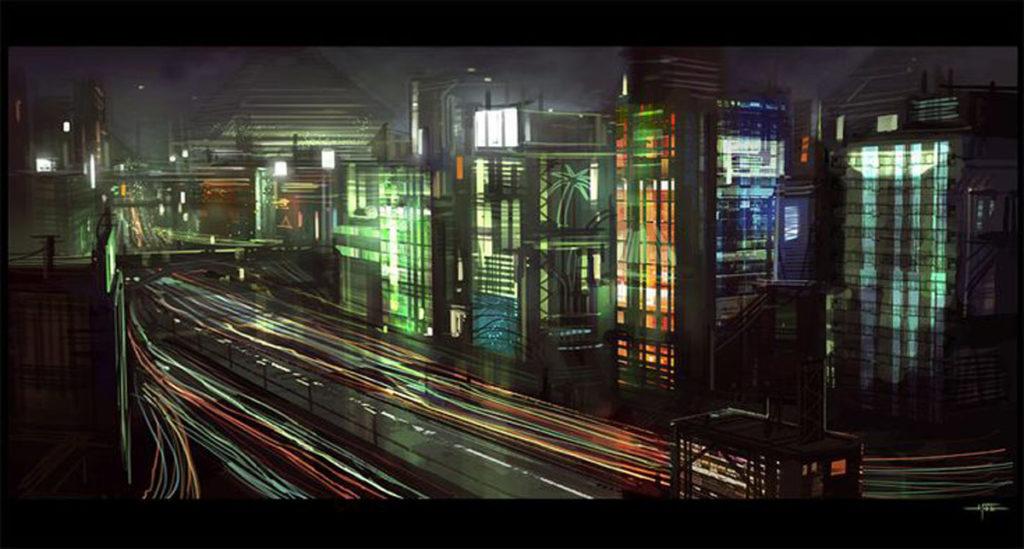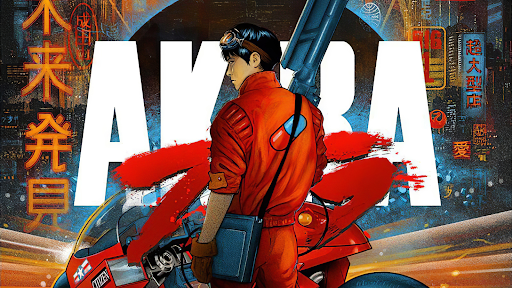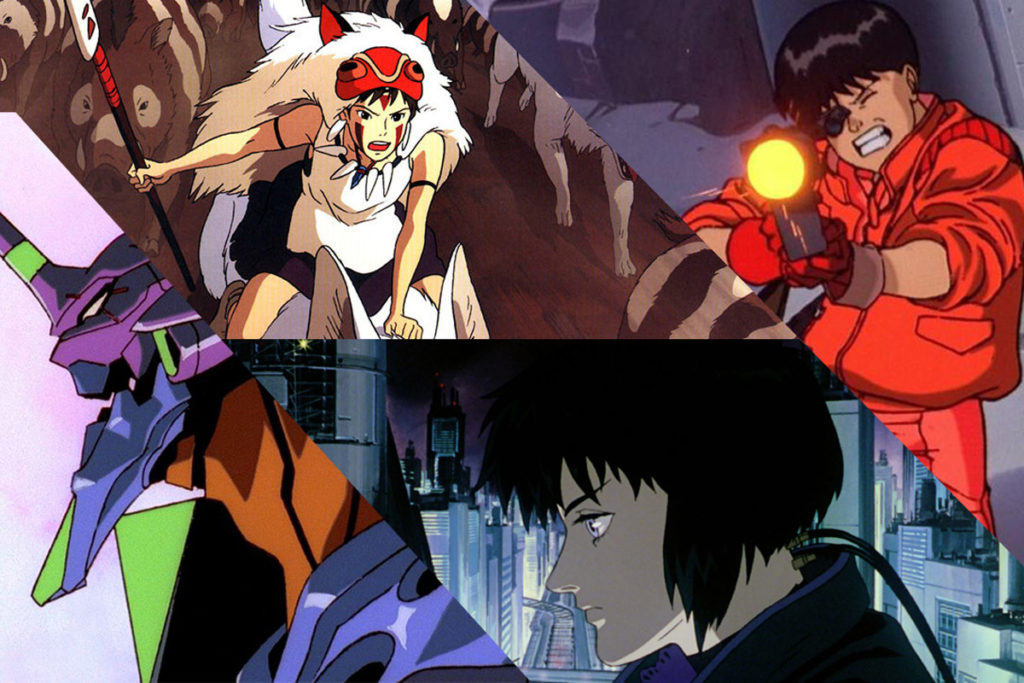Cyberpunk and anime: an artistic mashup that has led to some of the most elaborate depictions of dystopia in the medium’s century-spanning history.
From the early works of Osamu Tezuka – whose seminal manga-turned-anime series, Astro Boy, is cited as one of the earliest depictions of cyberpunk anime – the combination has since boasted myriad series and films which have pushed the boundaries of science fiction.
It is a machine of creativity and an essential subgenre for Japan Nakama readers.
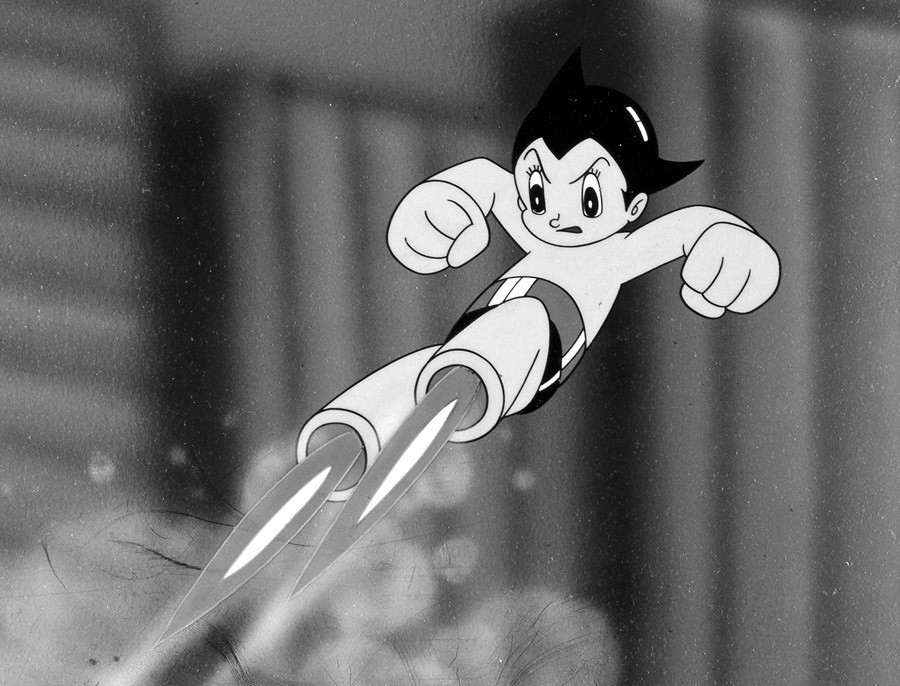
Drenched in neon and mechanically enhanced, a recurring import of cyberpunk cities is that of the ramifications of a cultural surge towards fully technologically-integrated societies.
Mamoru Oshii’s Ghost in the Shell, for instance, is a film about a terrorist hacker who fights for control over a panoptic network of machines within the inescapably interconnected New Port City. Through this, the film works as an allegory for the rampant incorporation of the internet in every facet of our world: Oshii’s moment of foresight into the digital era, in which data is bought and sold without consent, and social media governs the spread of hateful ideologies and political rhetoric.

Another motif of cyberpunk cities, as with much dystopian fiction, is the graphic exposure of humanity’s cataclysmic impact on the Earth’s environments. Presenting worlds that explore malignant forces of mass consumption (political and corporate), the consequences of failing to implement significant regulations of ecological sustainability, and the harrowing effect of war, generally of the nuclear variety.
Take Katsuhiro Otomo’s Akira, for example, a world gleaming with the bright neon lights of Neo-Tokyo, and yet defaced by the atomic ruins of the old city. A lingering reminder of the nuclear explosion which triggered the start of the anime’s fictional World War Three as well as a not-so-subtle evocation of the bombings of Hiroshima and Nagasaki that occurred at the tail-end of the actual World War Two.
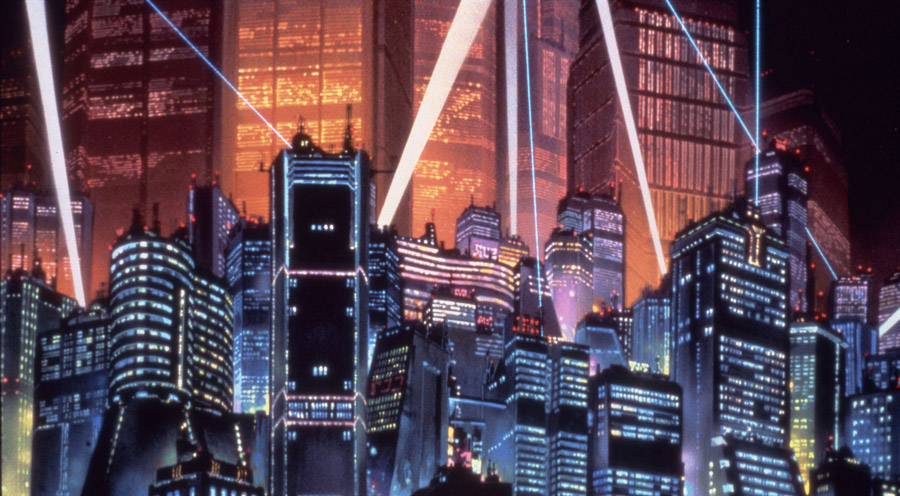
It is through these megalopolises that cyberpunk fiction allows the viewer to recognise humanity’s ability for incredible growth while instilling a cautionary indication that unbridled creation does not come without hubris.

As we dazzle at the neon lights and technological delights of cyberpunk fiction we are also encouraged to understand the significance of these gargantuan cities, dystopian societies, and the socio-political subtext therein.
With great technological advancement comes a decline in nature; with densely packed, industrial cities, comes an increase in class divide and financial inequality. Read on for a selective rumination on some of the most significant cyberpunk cities from across the anime canon.
Neo-Tokyo – Akira

Adapted from his manga of the same name, Otomo’s 1982 opus is lauded around the world for its technical achievements as well as being the film that brought the medium West. The film that gave rise to the distribution of anime in the USA and many European nations, Akira broke down the barriers of Japanese Animation, introducing a generation to the endless creation of the medium.
Boasting rigorously hand-drawn frames, comprising over 160,000 images and 2212 shots, Akira set the world aflame with its themes of violent political upheaval and its propensity to prove that animation wasn’t just for kids.
Set in the dystopian cityscapes of Neo-Tokyo, the film depicts the tale of the Capsule gang, a troupe of bikers who scour the city at night, searching for their next felony to commit, or for any clues as to the whereabouts of their rival gang, the Clown gang.
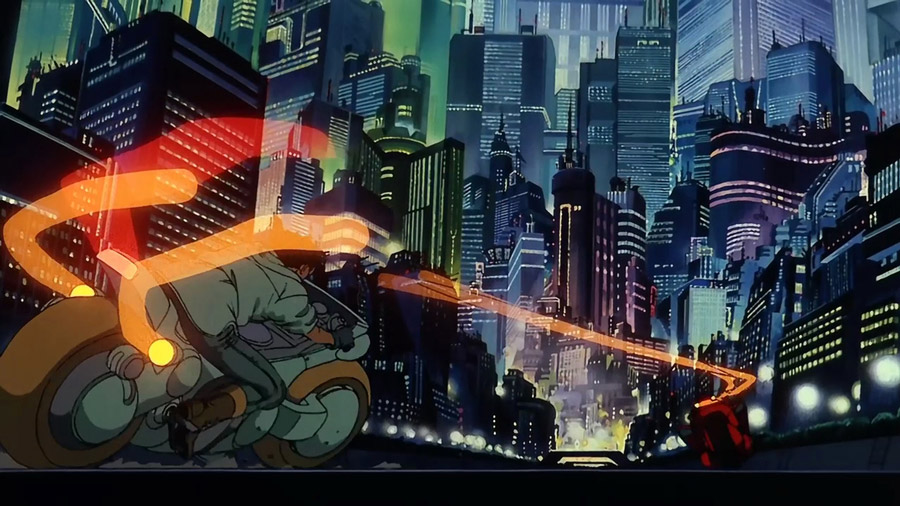
We’ve already mentioned the significance of Neo-Tokyo’s ruined counterpart, and its connection to the real-world tragedies of WW2, but what Akira also offers is a glimpse into humanity’s great, and oftentimes callous, propensity to evolve.
From the remnants of old Tokyo come the glorious skyscrapers of Otomo’s imagination. Neo-Tokyo is gargantuan in scale and futuristic in design and yet, through the narrative’s allegorical lens, manages to ground itself within the anxieties of our reality. A cyberpunk city built upon the memory of real-world tragedies, awe-inspiring mega structures and brutal socio-political truths.
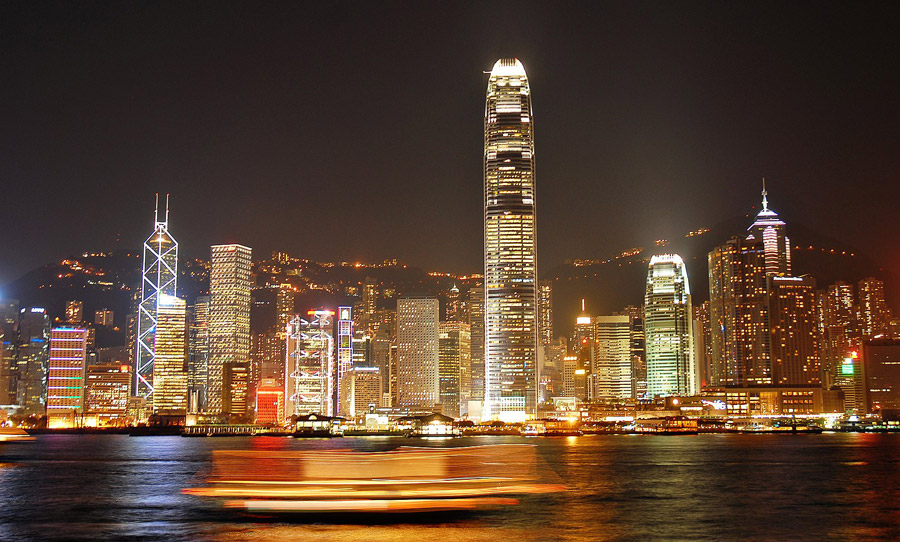
Neo-Tokyo seems to have foreshadowed the emergence of megacities. Hong Kong, Beijing, London, and indeed Tokyo itself, can all find their influence in these frames. While Kaneda and Tetsuo fight it out in the Olympic stadium, bear in mind that this film foresaw the country winning the right to put on the International tournament 30 years before it was even considered.

Yes, the Japan 2020 Olympics was later postponed due to the ongoing Covid crisis but the fact that Otomo’s masterwork predicted the tournament’s allocation exemplifies the ground-shaking resonance of this cyberpunk classic.
New Port City – Ghost in the Shell
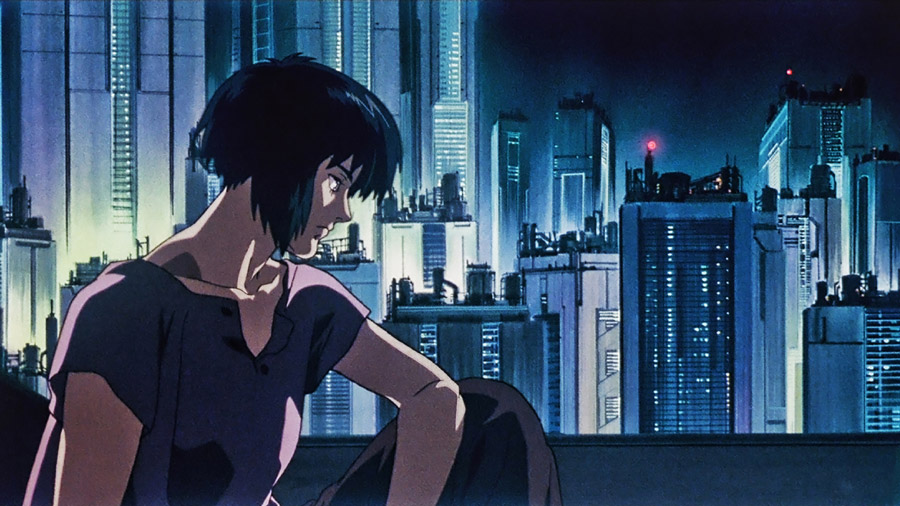
Mamoru Oshii’s timeless neo-noir thriller, Ghost in the Shell, is a film that stimulates all senses, leaving the viewer both in awe of its philosophical depth, and befuddled by its narrative complexity. Based on the manga of the same name by Masamune Shirow, Oshii’s 1995 adaptation features an intricate story about Major Motoko Kusanagi, a cyborg public-security agent, charged with locating the elusive hacker known as the Puppet Master.
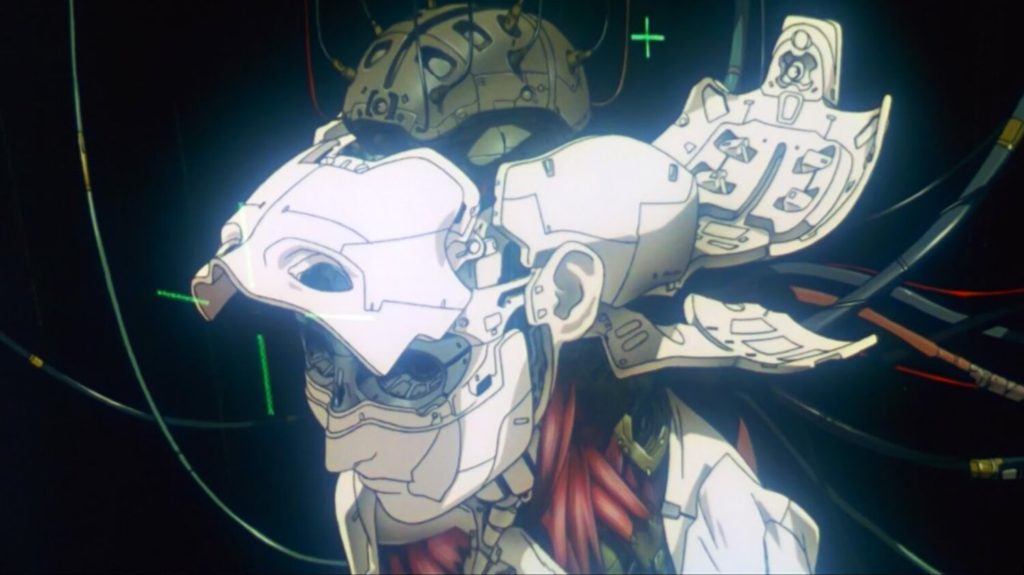
Thrown into an ideological battle of guns and tenets, Kusanagi explores the cybernetic megalopolis of New Port City, discovering new bread crumbs at each turn. Yet, as she delves deeper into the identity of the mysterious Puppet Master, Kusanagi uncovers much more than she bargains for. With a mind-bending conclusion that’ll leave heads spinning, Ghost in the Shell is an essential item of the anime canon, and as affirmed by Complex magazine, one of the greatest animated movies of all time.
Lambasted by neon atrocities, and polluted by architectural uniformity, Ghost in the Shell’s New Port City is more than just an iconic staple of dystopian anime. It is, in its essence, a symbol of the film’s themes of individuality, interconnectivity, and the inability to separate oneself from humanity’s growing reliance on technology.

As Kusanagi ventures around the cybernetic space of New Port City, she begins to question the truth of her existence, as she regains distorted memories of her life before she became an android. Yet she becomes thwarted by the city’s constant interconnection and surveillance, making her search for validity as futile as finding a needle in a haystack, or a data point within an endless sea of code.
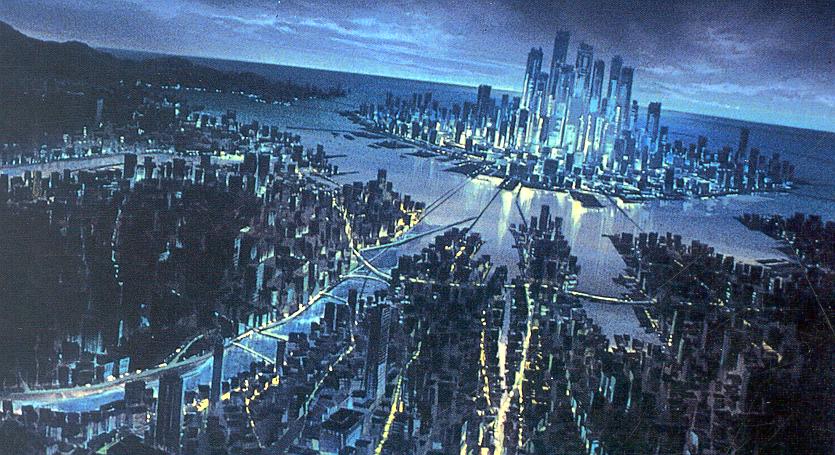
The city adds layers to the film’s labyrinthine complexity, a landscape of light and sound that resemble the inner workings of the human brain. The world of Ghost in the Shell is without limitation, as the Puppet Master transposes his consciousness (his “ghost”) to machines (“shells”) across the city, enacting chaos in his maniacal search for justice. Swept up in the demolition, Kusanagi battles with the notion of her own identity, while the city imprisons all in a web of uniformity.
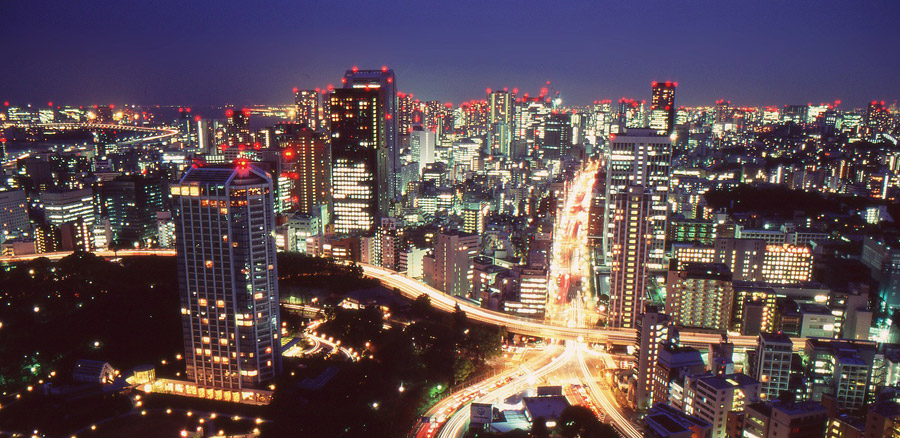
Featuring cityscapes that seem straight out of Blade Runner, or perhaps more so the urban jungles of Tokyo, and New York, Ghost in the Shell is heaving with identity politics and brimming with existential angst. In a world, so integrated with the internet – a global hyperlinked information system that seems so eerily similar to the cybernetic confines of New Port City – Oshii’s masterpiece proves that cyberpunk is more than just an aesthetic; it is a vision of what is, what could be, and what challenges we may face along the way.
Tokyo-3 – Neon Genesis Evangelion
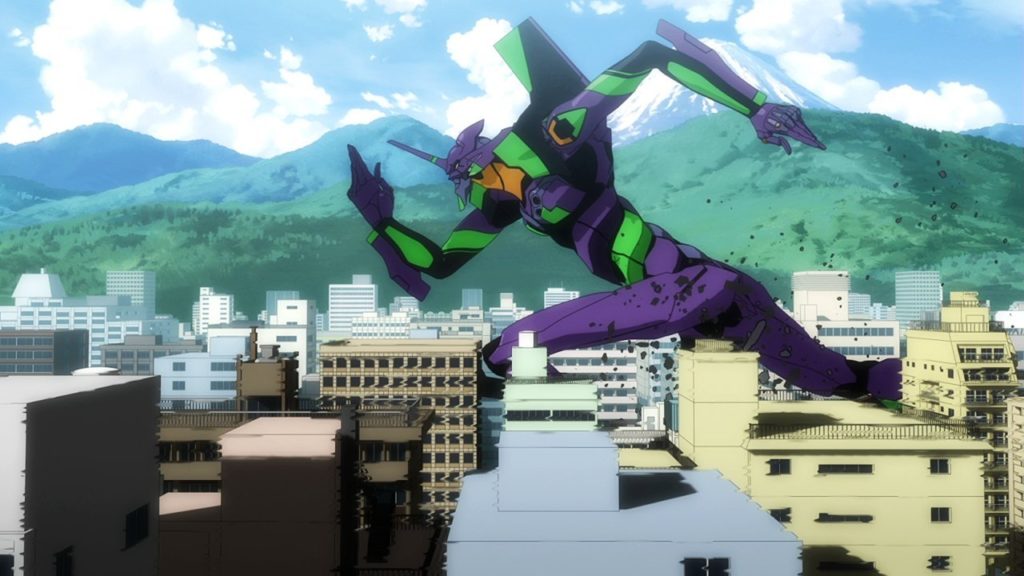
Neon Genesis Evangelion is more than just a series, it’s a dam burst of anxiety. Brimming with issues of identity, and committed to telling a painstakingly ruminative tale of a boy burdened with great power, Hideaki Anno’s 1995 anime masterpiece is a deep well of existentialism. With mecha and monsters to boot.
Shinji Ikari, a schoolboy wrought with daddy issues, is tasked with piloting one of the gigantic mecha, the titular Evangelion (Eva for short). Yet, while built to fight the colossal “alien” creatures known as Angels, it is Shinji’s self-imposed feelings of worthlessness that provide the series’ most pressing obstacles.

Set in the futuristic Tokyo-3, a sprawling underground metropolis built to replace the Japanese capital of Tokyo-2 (the nation’s stand-in after the original city was destroyed by a nuclear bomb) Neon Genesis Evangelion’s cyberpunk arena is almost as memorable as the mecha battles that occur within it. With monolithic buildings that retract into the earth whenever Angels attack, Tokyo-3 is designed to attract and subsequently fend off against the series’ iconic antagonists. Surrounded by missile stations and littered with weapon caches for defending Evas, Anno’s intricately designed and perplexing multiplex is just another of those awe-inspiring facets of his seminal anime masterpiece.
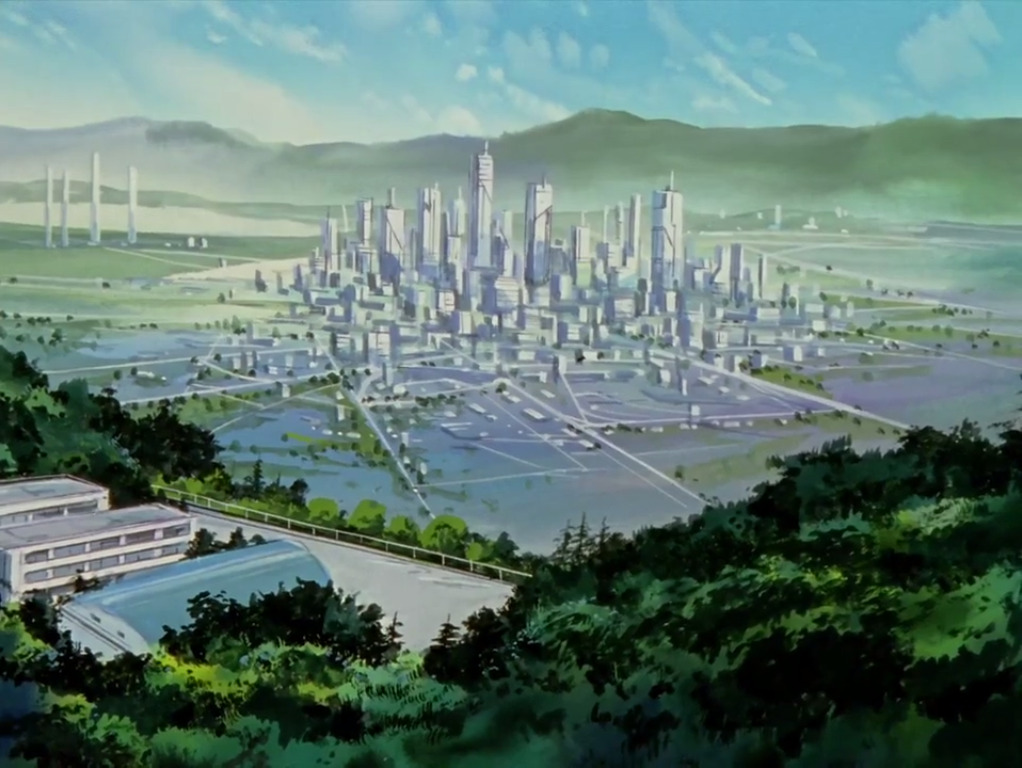
While devoid of any identical real-world comparisons (from what I gather there are no cities in Japan built to withstand an alien invasion), it’s safe to say that Tokyo-3’s modernist architecture and maze-like design is at least somewhat inspired by many existing megalopolises. Tokyo is the first and most obvious parallel, with its high rising skyscrapers, mountainous horizon and the oversaturated greyness of its Shinjuku district, a major commercial and administrative centre located in the city’s east side.
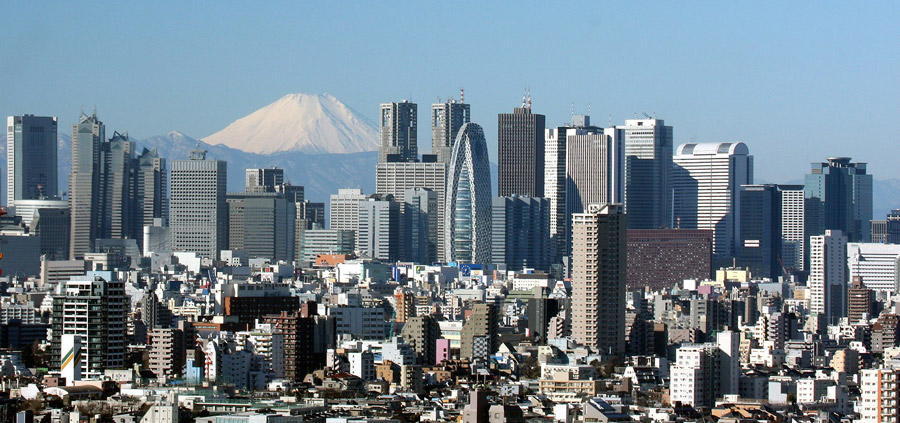

Another visual comparison, to Anno’s Tokyo-3, would be the commercial megacity, Hong Kong. With its iconic uniformed skyline signifying an architectural shift towards Globalisation, a frequent theme of dystopian fiction (Evangelion in particular) driven by the “spreading [of a] shared global culture” as outlined by James Palliste of Architect’s Journal.

Beyond the Wachowski sibling’s stellar cyberpunk action masterpiece, The Matrix, there’s extensive lore for fans to dissect, discuss, and gush over until the sky burns up. Movies, video games, comics – extensions of franchise mythos that explore the nooks and crannies of everyone’s favourite hegemonic simulation. The Animatrix is just one of these extensions. Or more precisely, nine of them.
Consisting of nine stylistically-unique animated short films, from various studios in Japan, the 2003 anthology presents a selection of off-tangent stories from within the world of The Matrix, building upon what came before, and constructing new narratives to stoke up the original’s iconic cyberpunk flair.
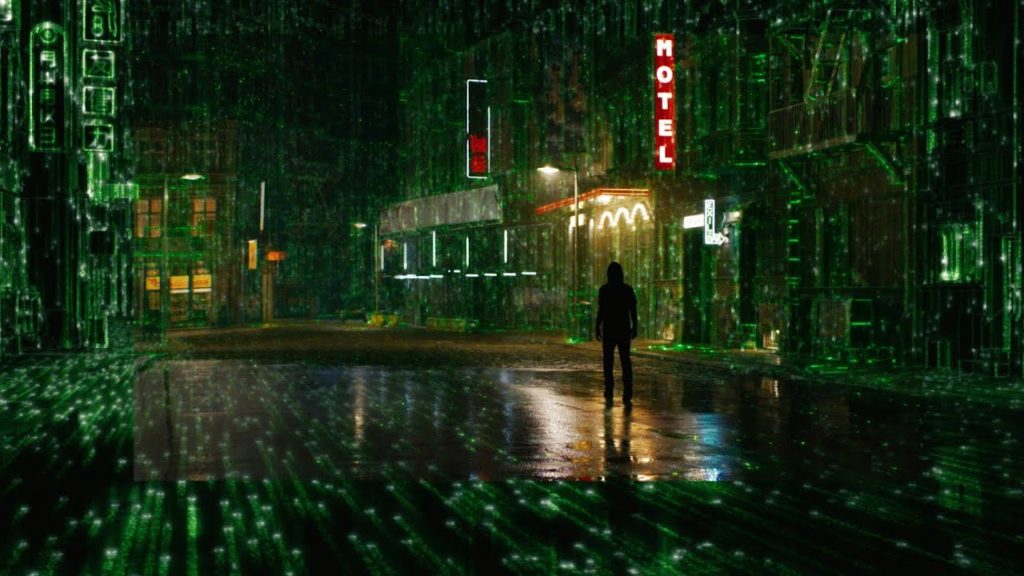
Arguably the most visually appealing of these narratives is Kōji Morimoto’s “Beyond”, a haunted house story with a cyberpunk twist. Set in the Japanesque metropolis of Mega City (the simulated setting for many of the films and spinoffs), a scurry of kids stumble upon a rundown building, seemingly possessed by strange anomalies.

Spurred by curiosity, the kids begin to exploit these anomalies, playing with zero-gravity and enjoying the inherent spookiness of the seemingly random events. Yet, when the villainous agents learn of the building’s oddities, they decide to investigate, patching out the anomalous building as you would any old glitch in a computer programme.
Imprisoned by the sprawling cityscape of Mega City, the haunted house provides a scapegoat for the children; a peek at their true potential and the ability to break away from the monotony of life. Trapped in a world of stagnation, Morimoto’s protagonists are offered a glimpse at the cracks in their world and set free from the chains of their subjugation; floating, dreaming and soaring around their new playpen. Once numbed by the uniform buildings, as industrial symbols of their enslavement, the kids are liberated by the anomalies in the house, enabled to break away from the feigned idyll of their simulated existence in the city and move beyond it.
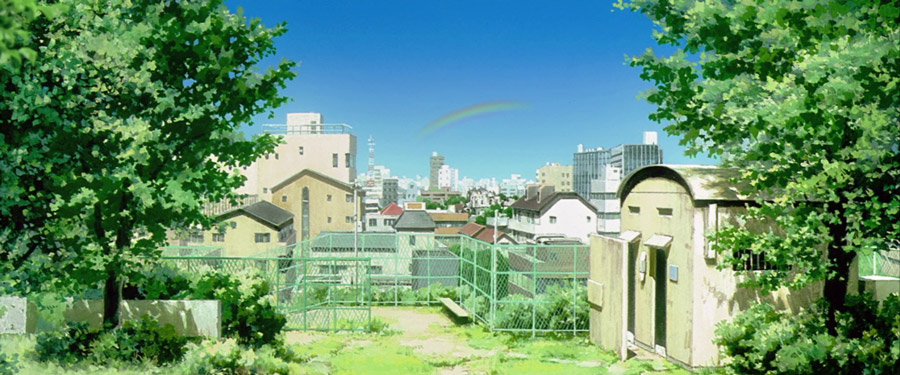
Through its vibrant animation and contemplative, oftentimes playful narrative, The Animatrix: Beyond is a slice of cake on top of the rich, meaty blowout of the mainline series. A must-see for Japan Nakama readers, and an anime gem of the cyberpunk milieu.
Metropolis – Metropolis

Full circle moment here folks as we return to “the Godfather of Manga” himself, Osamu Tezuka, whose seminal cyberpunk classic, Metropolis (1941) was adapted into an anime film by Rintaro in 2001.
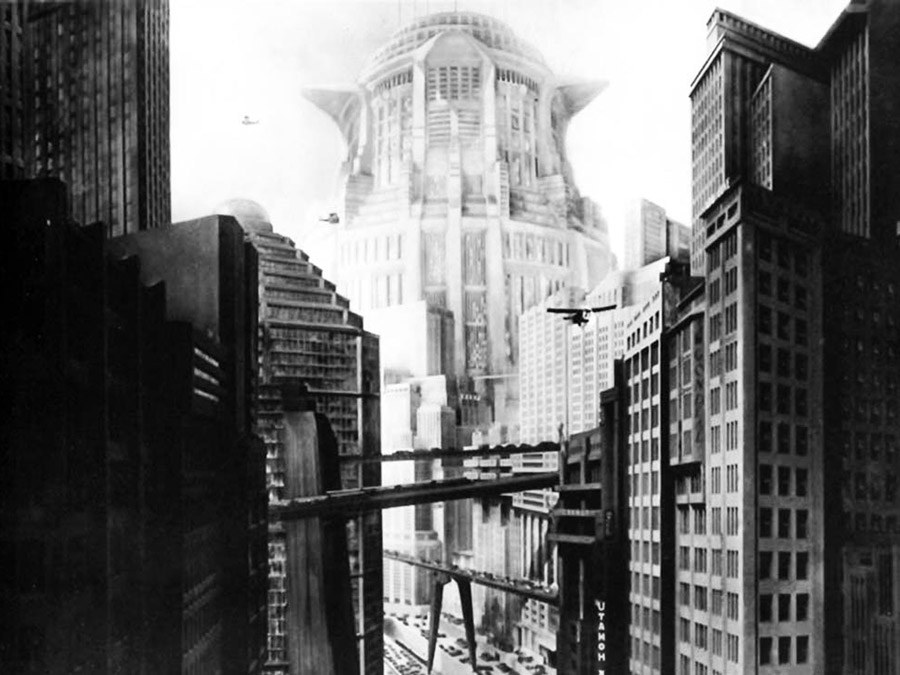
With a screenplay written by Akira daddy, Katsuhiro Otomo, and inspired by the German expressionist film of the same name by Fritz Lang, Metropolis is the story of Kenichi, a young boy, who, after coming into contact with an android girl, is propelled into a world of malicious corporations and government conspiracies.

In the multi-layered city, humans and robots live in unison: working, living and surviving under a strict regime led by the tyrannical Duke Red, the unofficial leader and wealthiest citizen of Metropolis. Rintaro’s adaptation explores the inherent inequalities of a plutocratic society as Duke Red works to control the city from his newly-built skyscraper, The Ziggurat, with the aid of the android superweapon known as Tima. Boasting monumental high rise skyscrapers and a mechanical web of track systems suspended in the air, the city illustrates the themes of Lang’s original, as we descend from the heights of The Ziggurat to the depths of the lower levels.
Dystopian fiction is allegorical by nature. From the wasteland of Mad Max to the simulation of The Matrix, the genre thrives on exposing the failings of humanity while instilling our capacity to change. It presents societies wrought with oppression, worlds in destitution and characters struggling to manoeuvre restrictive regimes enforced to dismember the notion of free will and coerce subjugation. Metropolis is no exception. Bridled with themes of class struggle, racial discrimination and financial deprivation as the robots are treated as second-class citizens, segregated to the lowest levels of the city.
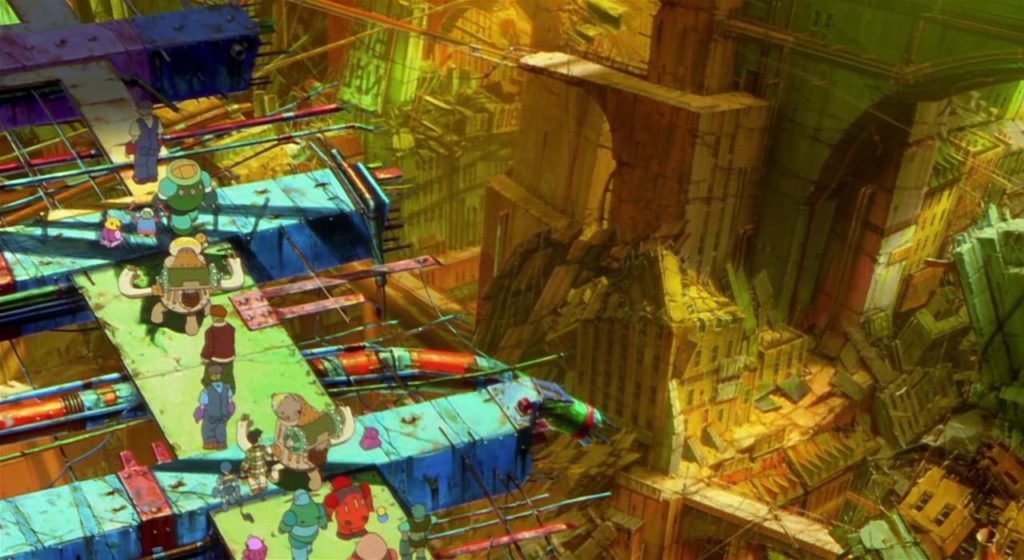
Technology and humanity have become intertwined. From smartwatches to social media, neon-laced skylines to the integration of the internet in every morsel of society, our reliance on technology, and its unbridled progression, has become an inescapable aspect of our existence. Metropolis echoes all of this and more, as Kenichi fights to bring down Duke Red’s oppressive new world order and save Tima from a destructive end.
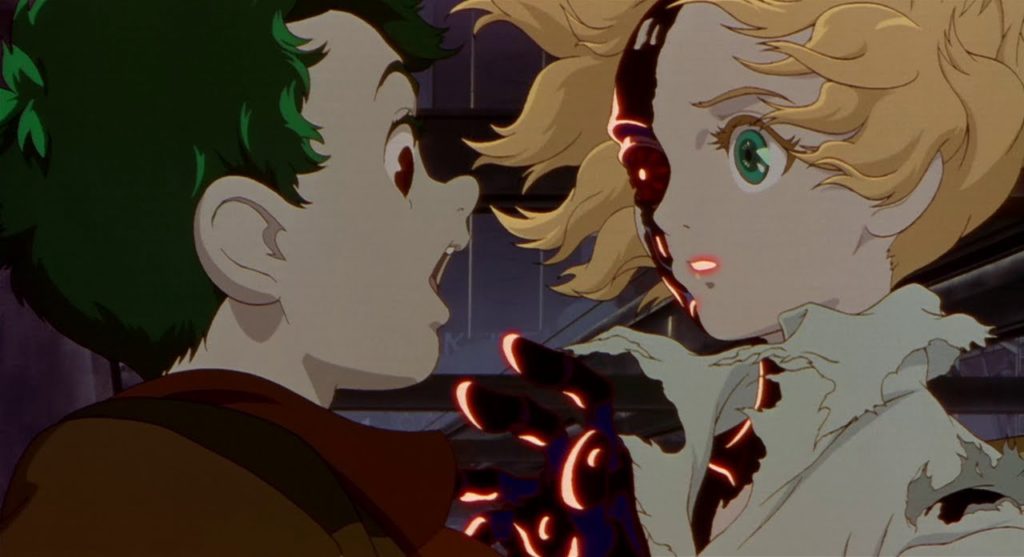
Metropolis screams of allegory. With all its glitz and glut, it allows us to take a peek at a scintillating future as a means of illuminating the imperfections of our present. Yet, while swimming in symbolism and sprawling in scale, Rintaro’s anime film remains, at its core, an intimate story about the power of friendship. A cyberpunk masterpiece that declares that even in a society plagued by adversity – corrupt governments, malevolent corporations, systemic discrimination and economic disparity – mankind’s capacity to love triumphs, always.








































